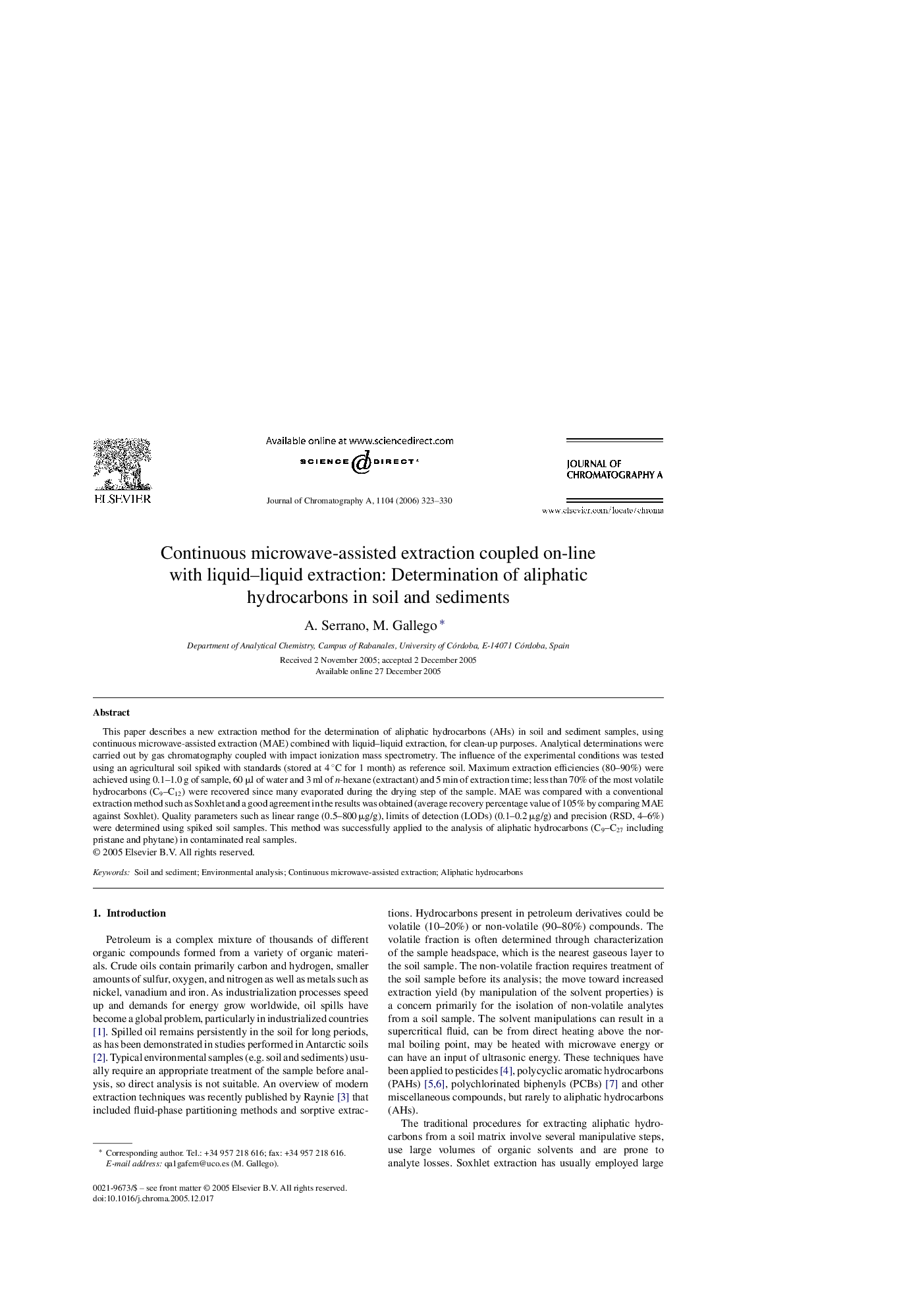| Article ID | Journal | Published Year | Pages | File Type |
|---|---|---|---|---|
| 1210339 | Journal of Chromatography A | 2006 | 8 Pages |
This paper describes a new extraction method for the determination of aliphatic hydrocarbons (AHs) in soil and sediment samples, using continuous microwave-assisted extraction (MAE) combined with liquid–liquid extraction, for clean-up purposes. Analytical determinations were carried out by gas chromatography coupled with impact ionization mass spectrometry. The influence of the experimental conditions was tested using an agricultural soil spiked with standards (stored at 4 °C for 1 month) as reference soil. Maximum extraction efficiencies (80–90%) were achieved using 0.1–1.0 g of sample, 60 μl of water and 3 ml of n-hexane (extractant) and 5 min of extraction time; less than 70% of the most volatile hydrocarbons (C9–C12) were recovered since many evaporated during the drying step of the sample. MAE was compared with a conventional extraction method such as Soxhlet and a good agreement in the results was obtained (average recovery percentage value of 105% by comparing MAE against Soxhlet). Quality parameters such as linear range (0.5–800 μg/g), limits of detection (LODs) (0.1–0.2 μg/g) and precision (RSD, 4–6%) were determined using spiked soil samples. This method was successfully applied to the analysis of aliphatic hydrocarbons (C9–C27 including pristane and phytane) in contaminated real samples.
